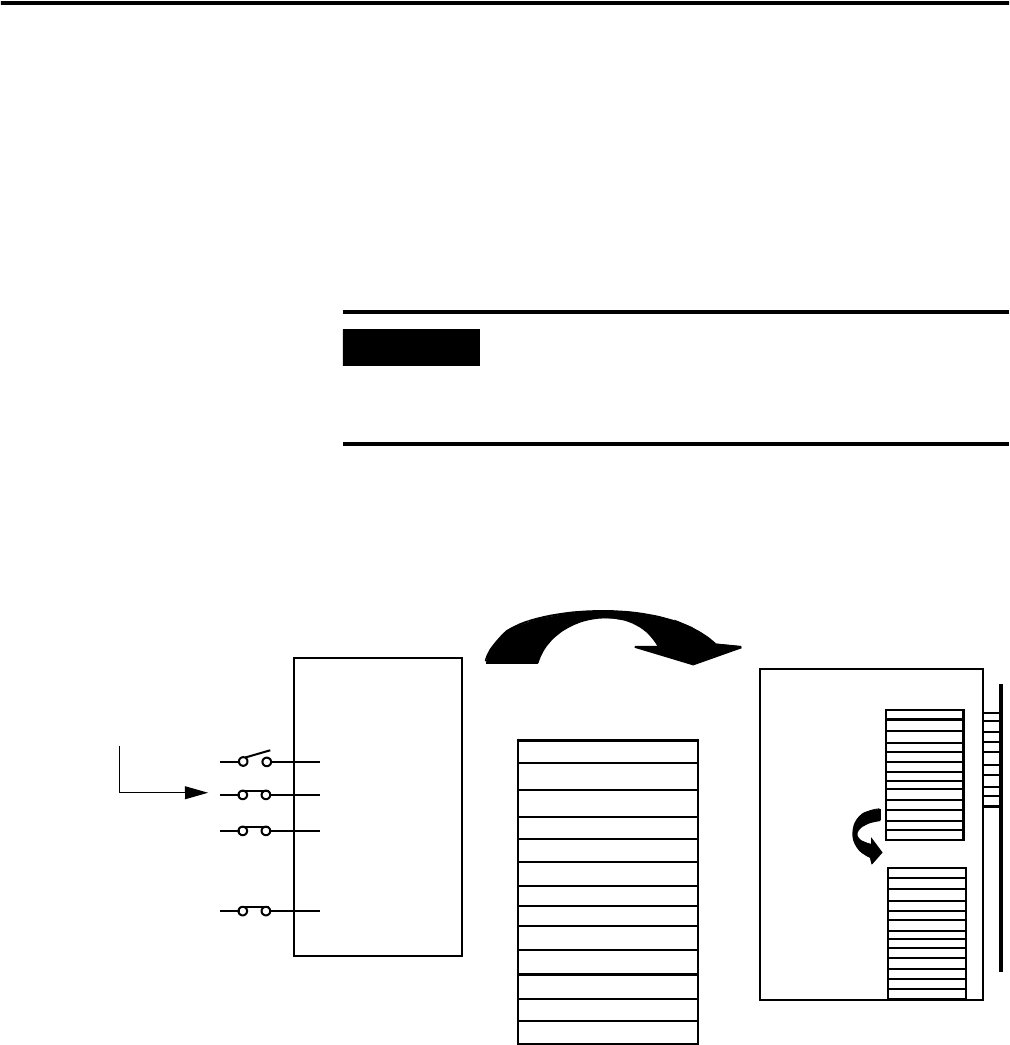supporting Sequence of Events
Table Of Contents
- 1732E-UM002A-EN-E 1732E EtherNet/IP ArmorBlock Supporting Sequence of Events User Manual
- Important User Information
- Table of Contents
- Preface
- Chapter 1 - About 1732E ArmorBlock Modules
- Chapter 2 - Module Overview
- Chapter 3 - Use the Module in an ArmorBlock System
- Chapter 4 - Install Your Module
- Chapter 5 - Configure the Module for Your EtherNet/IP Network
- Chapter 6 - Configure the Module Using RSLogix 5000
- Introduction
- Set Up the Hardware
- Create the Example Application
- Configure Your I/O Module
- Overview of the Configuration Process
- Add a New Bridge and Module to Your RSLogix 5000 Project
- Use the Default Configuration
- Change the Default Configuration
- Download Your Configuration
- Edit Your Configuration
- Access Module Data in RSLogix 5000
- Configure RSLogix 5000 and the 1756-EN2T Communication Module for CIP Sync
- Chapter Summary and What’s Next
- Chapter 7 - Module Features
- Introduction
- Determine Module Compatibility
- Module Features That Can Be Configured
- Chapter Summary and What’s Next
- Chapter 8 - Using the Module
- Chapter 9 - Interpret Status Indicators
- Chapter 10 - Troubleshoot the Module
- Appendix A - ArmorBlock 2 Port Ethernet Module Specifications
- Appendix B - Module Tags
- Appendix C - 1732E EtherNet/IP ArmorBlock Supporting Sequence of Events Data Tables
- Appendix D - Connect to Networks via Ethernet Interface
- Appendix E - 1732E ArmorBlock I/O Embedded Web Server
- Glossary
- Index
- How Are We Doing?
- Back Cover

Publication 1732E-UM002A-EN-P - March 2010
Using the Module 63
Copy Relevant Input Data to a Separate Data Structure
When the module sends input data to the controller, the data is stored in the
controller tags. We recommend you use a COP or CPS instruction to
programmatically copy new timestamp data from the controller tags to a
separate array in the controller’s memory. Later, you can combine timestamp
data from multiple modules and use a Sort routine to determine the order of
events, with relative time reference, that occurred in a specific time period.
The following figure shows when to use the COP instruction. In this example,
the module timestamped a transition on input 1 and is sending input data to
the controller at each RPI. The controller copies input data from the controller
tags to a separate data structure.
Your application determines what input data should be copied from the
controller tags to a separate data structure. Although you can copy all the input
data to another array, typically, only the data from specific tags is copied.
The following figure shows an example of ladder logic in which the controller
only moves OFF to ON timestamp data for inputs 0…3 from the controller
tags to a separate data structure named myarray. The data in the myarray
IMPORTANT
When you copy relevant timestamp data from the controller
tags to a separate data structure, make sure you copy enough
information for each timestamp that you can differentiate
between timestamps for different inputs.
Controller tags
Separate array
4. Controller
copies
relevant
data from
controller
tags to a
separate
array.
1. Input 1 transitions
from OFF to ON.
2. Module timestamps
the transition.
3. Module sends input
data to the controller.
1732E-IB16M12SOEDR ControlLogix controller
I.Fault
I.EventOverflow
I.OffsetTimeStamp
I.EventNumber
I.Timestamp[16].OffOn[2]
I.Timestamp[16].OnOff[2]
I.Data
I.NewData
I.ShortCircuit
I.OpenWire
I.GrandMasterClockID
I.LocalClockOffset
I.SyncedToMaster
I.Fault
I.EventOverlow
I.OffsetTimeStamp
I.EventNumber
I.Timestamp[16].OffOn[2]
I.Timestamp[16].OnOff[2]
I.Data
I.NewData
I.ShortCircuit
I.OpenWire
I.GrandMasterClockID
I.LocalClockOffset
I.SyncedToMaster










